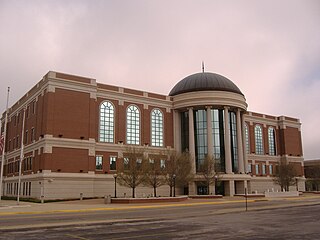
Warren County is a county located in the south central portion of the U.S. state of Kentucky. As of the 2020 census, the population was 134,554, making it the fifth-most populous county in Kentucky. The county seat is Bowling Green. Warren County is now classified as a wet county after voters approved the measure in 2018. The measure became law in January 2019 that allows alcohol to be sold county wide.
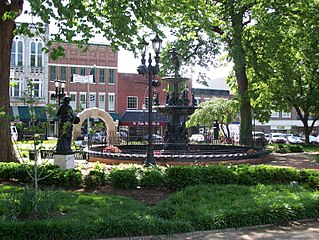
Bowling Green is a city and the county seat of Warren County, Kentucky, United States. Its population was 72,294 as of the 2020 census, making it the third-most populous city in the state, after Louisville and Lexington. The Bowling Green metropolitan area is the fourth-largest in the state and had a population of 179,639 in 2020.
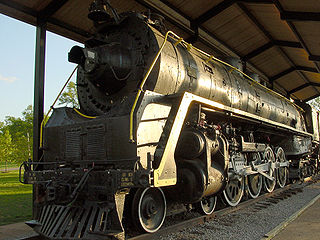
The Nashville, Chattanooga and St. Louis Railway was a railway company that operated in the U.S. states of Kentucky, Tennessee, Alabama, and Georgia. It began as the Nashville and Chattanooga Railroad, chartered in Nashville on December 11, 1845, built to 5 ft gauge and was the first railway to operate in the state of Tennessee. By the turn of the twentieth century, the NC&StL grew into one of the most important railway systems in the southern United States.

The Louisville and Nashville Railroad, commonly called the L&N, was a Class I railroad that operated freight and passenger services in the southeast United States.

The Pan-American was a passenger train operated by the Louisville and Nashville Railroad (L&N) between Cincinnati, Ohio and New Orleans, Louisiana. It operated from 1921 until 1971. From 1921 to 1965 a section served Memphis, Tennessee via Bowling Green, Kentucky. The Pan-American was the L&N's flagship train until the introduction of the Humming Bird in 1946. Its name honored the substantial traffic the L&N carried to and from the seaports on the Gulf of Mexico. The Pan-American was one of many trains discontinued when Amtrak began operations in 1971.

The Union Station of Louisville, Kentucky is a historic railroad station that serves as offices for the Transit Authority of River City (TARC), as it has since mid-April 1980 after receiving a year-long restoration costing approximately $2 million. It was one of at least five union stations in Kentucky, amongst others located in Lexington, Covington, Paducah and Owensboro. It was one of three stations serving Louisville, the others being Central Station and Southern Railway Station. It superseded previous, smaller, railroad depots located in Louisville, most notably one located at Tenth and Maple in 1868–1869, and another L&N station built in 1858. The station was formally opened on September 7, 1891, by the Louisville and Nashville Railroad. There was a claim made at the time that it was the largest railroad station in the Southern United States, covering forty acres. The other major station in Louisville was Central Station, serving the Baltimore and Ohio, the Illinois Central and other railroads.
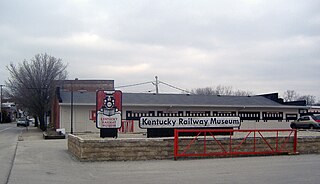
The Kentucky Railway Museum, now located in New Haven, Kentucky, United States, is a non-profit railroad museum dedicated to educating the public regarding the history and heritage of Kentucky's railroads and the people who built them. Originally created in 1954 in Louisville, Kentucky, the museum is at its third location, in extreme southern Nelson County. It is one of the oldest railroad stations in the United States.
The Memphis, Clarksville and Louisville Railroad (MC&L) was a railway in the southern United States. It was chartered in Tennessee in 1852, and opened in 1859. The MC&L entered receivership after the American Civil War, and financial troubles led to an 11-day strike in 1868 that ended when Louisville and Nashville Railroad (L&N) leased the line. L&N finally purchased the MC&L in 1871 and operated it as its Memphis Branch. L&N was merged into CSX, and CSX sold the former MC&L line to R.J. Corman Railroad Group in 1987, becoming that company's Memphis Line.

Memphis Union Station was a passenger terminal in Memphis, Tennessee. It served as a hub between railroads of the Southwest, the Missouri Pacific Railroad and the St. Louis Southwestern Railway, and railroads of the Southeast, the Louisville and Nashville Railroad, the Nashville, Chattanooga and St. Louis Railway and the Southern Railway. The terminal, completed in 1912, was built in the Beaux-Arts style and was located on Calhoun Street, between south Second Street and Rayburn Boulevard. It was demolished in 1969. This location in south Memphis was approximately two blocks east of the other major Memphis railroad terminal, Memphis Grand Central Station.

Memphis Central Station, referred to as Grand Central Station prior to 1944, is a passenger terminal in Memphis, Tennessee. Located along Main Street and G.E. Patterson Boulevard in Downtown Memphis, it currently a service stop for Amtrak's City of New Orleans route, arriving in late evening northbound and in the morning southbound. It is also served by the MATA Trolley system. The building was opened in 1914, and is located within the city's South Main Arts District. It is also an contributing property to the South Main Street Historic District of the National Register of Historic Places, as are the National Civil Rights Museum and other historic properties within the district boundaries.
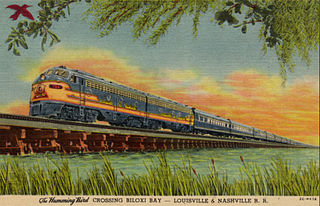
The Humming Bird was a named train of the Louisville and Nashville Railroad (L&N). The train, inaugurated in 1946, originally ran from Cincinnati, Ohio, to New Orleans, Louisiana, via Louisville, Nashville, Birmingham, Montgomery and Mobile and later via a connection at Bowling Green, Kentucky, to Memphis, Tennessee. A connection to Chicago was provided by the Chicago and Eastern Illinois Railroad.
The Louisville and Nashville Depot, or Louisville and Nashville Railroad Depot or Louisville and Nashville Passenger Station, Louisville and Nashville Railroad Passenger Depot or variations, may refer to the following former and active train stations previously used by the Louisville and Nashville Railroad. Some of these are listed on the National Register of Historic Places (NRHP).
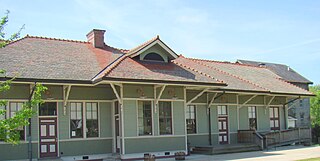
Stanford L&N Railroad Depot, also known as Baughman's Mill and Stanford Railroad Depot, is a historic train depot located in Stanford, Kentucky. It was built in 1911 and was used by the Louisville and Nashville Railroad.

The L & N Railroad Depot in the Hopkinsville Commercial Historic District of Hopkinsville, Kentucky is a historic railroad station on the National Register of Historic Places. It was built by the Louisville & Nashville Railroad in 1892.

The Union Station in Owensboro, Kentucky, is a historic railroad station, built in 1905. Built mostly for the Louisville and Nashville Railroad, the station is made of limestone and slate, and currently is home to several businesses.

Louisville & Nashville 152 is a preserved K-2a class 4-6-2 "Pacific" type steam locomotive listed on the National Register of Historic Places, currently homed at the Kentucky Railway Museum at New Haven, Kentucky in southernmost Nelson County, Kentucky. It is the oldest known remaining 4-6-2 "Pacific" type locomotive to exist. It is also the "Official State Locomotive of Kentucky", designated as such on March 6, 2000. The locomotive is currently owned and being restored back to operating condition by the Kentucky Railway Museum.
The Frankfort and Cincinnati Model 55 Rail Car is a historic railcar on the National Register of Historic Places. The railcar currently resides at the Kentucky Railway Museum in New Haven, Nelson County, Kentucky.
The Glasgow Railway is an American short-line railroad whose line runs from Park City to Glasgow, Kentucky.
The former Louisville and Nashville Railroad Lebanon Branch was 77 miles long and ran from Lebanon Junction in Bullitt County to near Mt. Vernon in Rockcastle County. Construction of the branch began in 1857, reaching Lebanon in that year. The line was extended to Crab Orchard in 1866 and completed in 1868. Most of the line was abandoned in 1987. The portion from Stanford to Mt. Vernon was abandoned during the 1990s.
Chattanooga Union Station, more commonly known as the Union Depot in Chattanooga, constructed between 1857 and 1859, served as a train car shed in Chattanooga, Tennessee. Located at Broad and Ninth Streets, the station was one of two major railroad terminals in the city, the other being the Southern Railway's Terminal Station.















